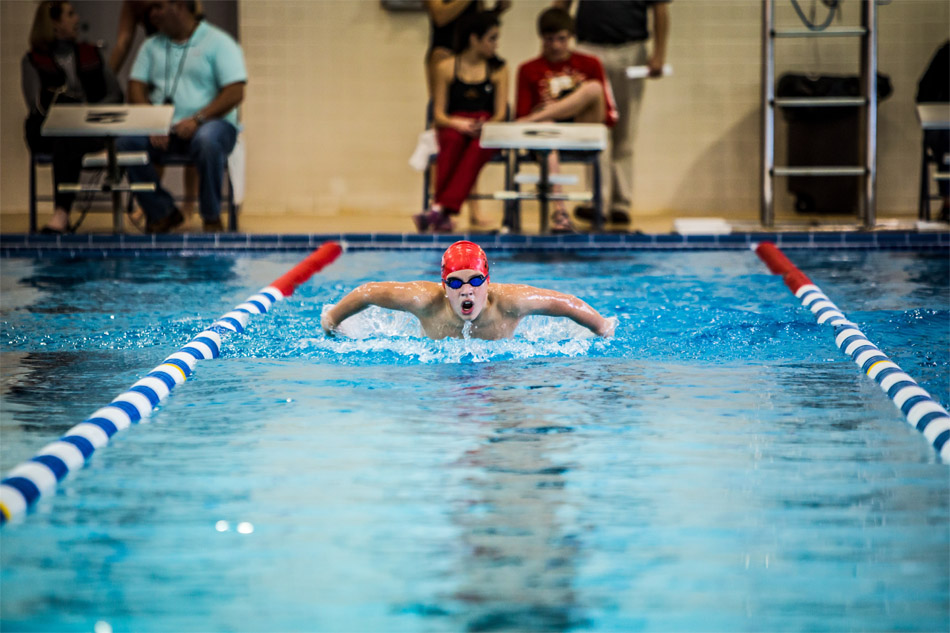How to Increase Leg Strength for Water Polo
Jul 26th 2023
Playing water polo is exhilarating. Between trying to score a win for your team and protecting your own goal, there are many facets to the game. Getting better at water polo isn’t just a matter of practice and skill, it takes consistent and targeted effort to become effortless at water polo.

If you want to improve your performance at water polo, you need to know how to increase leg strength and follow an informed strength training for water polo plan. When you’re unsure of where to start or why it even matters, keep on reading to find out:
Why Leg Strength for Water Polo Is Needed
Water polo is a challenging sport, requiring a combination of strength, speed, and endurance to play. Simultaneously, you also need to be able to wrestle with other players and aim for the opponent team’s goal. Considering how the sport is played, leg strength becomes a crucial factor in determining how well you can do during the game.
Leg strength gives a player the ability to perform explosive (and fast) movements without losing endurance or strength. Whether a player needs the power to swim further, shoot, or quickly change direction, having strong legs can help with all of that. Increasing leg strength becomes important for a player to maintain agility, efficiency, and overall performance, not just for water polo but for swimming as well.
Find the Right Routine
When it comes to understanding how to increase leg strength for water polo, focusing on finding a routine that works for your personal requirements is critical. A beginner player will not have the same goals as someone who’s been playing water polo for years, and everything from swimming gear to exercises will have to be customized for your skill level.
The right routine for anyone who is aiming for holistic strength training for water polo needs to include resistance and interval training alongside regular plyometric and flexibility exercises to target key muscles used while swimming. If you can, find a mentor or instructor who can analyze your weak points and suggest exercises to improve upon them. You will need to alternate between exercises and workouts in the water and out of the water as well.
Engage in Resistance Training
When you want to increase leg strength in a sustainable manner, resistance training is the best way to go about it. Exercises that can help tone and strengthen your legs include:
- Lunges: There are a ton of variations when it comes to lunges, including reverse lunges and walking lunges. They engage core leg muscles, including the hamstrings, quadriceps, glutes, and calves, and are ideal when you want to learn how to increase leg strength. To make this exercise even more effective, you can consider adding additional weight to your ankles or using dumbbells. Do a specific number of reps on each leg to make sure that they’re getting equal exercise.
- Squats: When you’re performing squats, proper consideration needs to be given to body form and maintaining a neutral spine. You can choose to do weighted squats (with dumbbells or kettle weights) or perform simple bodyweight squats. Focus on maintaining the weight at the heel of your foot.
- Deadlifts: Nothing increases leg strength like weighted deadlifts. You can choose to do single-leg deadlifts, sumo deadlifts, or any other variation that is comfortable for you. It’s best not to overdo with the weight and focus on form at the start to prevent any injury.
- Single-leg exercises: Improve balance, stability, and strength with single-leg squats, Bulgarian split squats, and single-leg deadlifts. They also act as a stabilizing force for leg muscles and can help in boosting movement during water polo.
- Resistance band exercises: If you don’t want to use external weights, using resistance bands is ideal for improving stability and flexibility. Try leg extensions or hamstring curls with lighter resistance bands, and gradually build up to higher difficulty so you can maintain control and improve strength.
Consider Plyometric and Interval Training
When done correctly, plyometric exercises can increase a player’s capacity to perform explosive movements within the water and improve their agility as well. These exercises can be done in a quick circuit or through interval training for the best results. Some plyometric exercises that players should consider including when they want to know how to increase leg strength, are jump-based exercises. From box jumps to squat jumps, there are many exercises with jumps that are ideal. Depending on which exercises you choose to do, the form and technique will differ. Single-leg hops and lateral bounds are also other options you should consider.
To improve endurance and performance in the water, interval training is important to incorporate. Alternate between periods of intense exercise followed by relaxed movement to stimulate what happens in an actual water polo game while building your fitness. Strength training for water polo should always include interval training, especially sprint sets. For example, sprinting 4 laps in the water, followed by relaxed swimming for 2 laps. To track your progress, always use a timer or ask a friend or coach to time it for you.
You might also want to try out interval kicking, which involves using a kickboard. Kick at a high intensity for a specific period, followed by a short recovery period. Keep repeating this a few times every time for maximum results.
Train in the Water
Doing simulation exercises in the water and practicing as much as possible is essential when you want to excel at water polo. You can begin by doing water drills that replicate movements commonly used during water polo, including shooting and passing drills. Play simulation games where you quickly have to change directions or speed up immediately to improve your actual performance during the game.

Learning how to increase leg strength is not enough; you have to know how to apply increased strength and endurance during a game of water polo as well. Practice different types of kicks, including flutter, dolphin, and eggbeater kicks. You should always practice treading water in your spare time, as you need to stay afloat at all times during the game.
Creating a Holistic Strategy for Success
For those who want to excel in playing water polo, knowing how to increase leg strength and overall fitness is crucial. By focusing on a combination of strategies and workouts, you can improve your overall water polo playing within a set deadline. It’s important to remember that you should never sacrifice proper technique and consistency when it comes to excelling at water polo. Strength training for water polo can lead to real results when you are dedicated and follow through with a plan.












